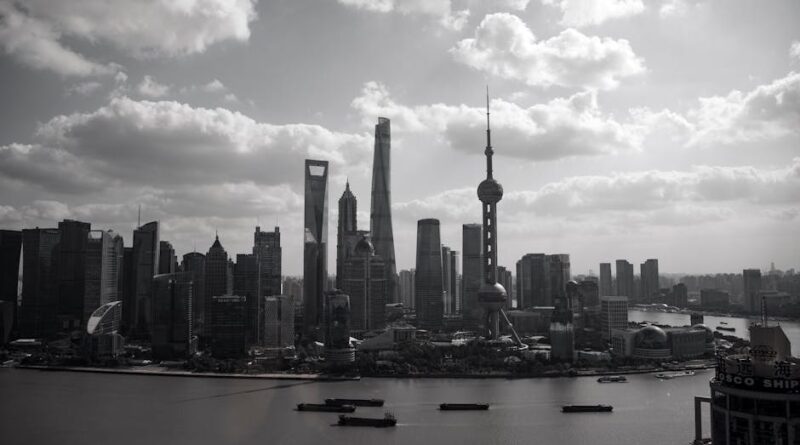The Rise of China: A Global Perspective
Have you ever wondered how China transformed from a largely agrarian society to one of the world’s largest economies? This remarkable journey is not just a story of numbers. It affects everyone, from global markets to your local store. Lets explore this rise and what it means for us all.
what’s Driving Chinas Economic Growth?

China’s growth story began in the late 1970s. Before that, the economy was tightly controlled by the government. People we’re not allowed to start businesses freely. Then, reforms began. The government opened doors to private entrepreneurship.
This shift created a surge in economic activity. In fact, between 1978 and 2018, Chinas GDP grew an average of 9.5% each year. To put that into perspective, that’s like running a marathon at a sprinting pace!
How Does China Compare to Other Economies?

China is now the second-largest economy in the world, right after the United States. It has overtaken Japan and Germany, which were once the leaders.
Heres a quick comparison:
- Chinas GDP: Over $14 trillion.
- U.S. GDP: About $21 trillion.
- Japans GDP: Roughly $5 trillion.
This rapid growth means China is becoming a key player on the world stage. But how did they achieve this? Lets break it down.
What Role Does Manufacturing Play?

Manufacturing is a major pillar of China’s economy. The country is often called the “world’s factory.” It produces everything from toys to electronics. In fact, China accounts for about 28% of global manufacturing.
This success in manufacturing has created millions of jobs. It lifted many people out of poverty and raised living standards across the nation. But it isn’t just about making things; it’s also about innovation.
Is China Leading in Technology?

Yes, China is rapidly advancing in technology. Companies like Huawei and Alibaba are leading the charge. They are not just mimicking Western technology anymore; they are creating their own.
For example, the Chinese government has invested heavily in artificial intelligence (AI) and 5G technology. A report by the McKinsey Global Institute states that China could capture up to 26% of global AI economic benefits by 2030.
Imagine a world where your home appliances talk to each other. That future is not far away, thanks to innovations from Chinese tech firms.
What About Trade Relations?
China’s growth has reshaped global trade. Many countries rely on China for goods. In fact, it is the largest trading partner for over 120 nations.
However, this dependence has sparked tension, especially with the United States. Trade disputes have made headlines in recent years. Tariffs and sanctions have affected prices and availability of products.
But how does this impact everyday life? Think about the prices of your favorite electronics or clothes. Changes in trade can directly affect what you pay at the checkout counter.
How Is China Addressing Environmental Issues?
As Chinas economy grows, so do it’s environmental challenges. Air pollution and water scarcity are major concerns. The government is aware of these issues and is taking action.
China is investing in renewable energy. It is now the world’s largest producer of solar panels. In 2020, about 30% of it’s energy came from renewable sources. that’s a significant step towards sustainability.
So, what does this mean for the planet? Cleaner energy can lead to less pollution, benefiting everyone globally.
What Does the Future Hold for China?
Chinas future is a topic of much debate. Some experts believe it will continue to grow, while others think it may face challenges.
Here are a few areas to watch:
- Demographics: China is facing an aging population, which could slow growth.
- Debt Levels: High debt in both the public and private sectors could pose risks.
- Global Relations: Tensions with other countries could impact trade and investments.
Understanding these factors is crucial. They can affect not just China, but economies worldwide.
What Should We Learn from China’s Rise?
China’s journey offers valuable lessons for other nations. Here are a few:
- Adaptability: Being open to change can lead to growth.
- Investment in Education: A skilled workforce drives innovation.
- Embracing Technology: Staying ahead in tech can create economic advantages.
These takeaways are not just for policymakers but for individuals, too. Think about how you can adapt in your life or career.
Conclusion: The Global Impact of Chinas Rise
Chinas rise is one of the most significant events of our time. It reshapes economies, influences global politics, and affects daily lives. Understanding this dynamic can help you navigate a rapidly changing world.
As we move forward, keep an eye on China. The country’s decisions will likely impact where the world is headed. Stay informed and engaged. Whether it’s through news, education, or conversations, being aware of these changes can empower you.
For further reading on global economies, check out [World Bank](https://www.worldbank.org/en/topic/economy). If you want to learn more about technology trends in China, visit our post on Technology Trends in China.



